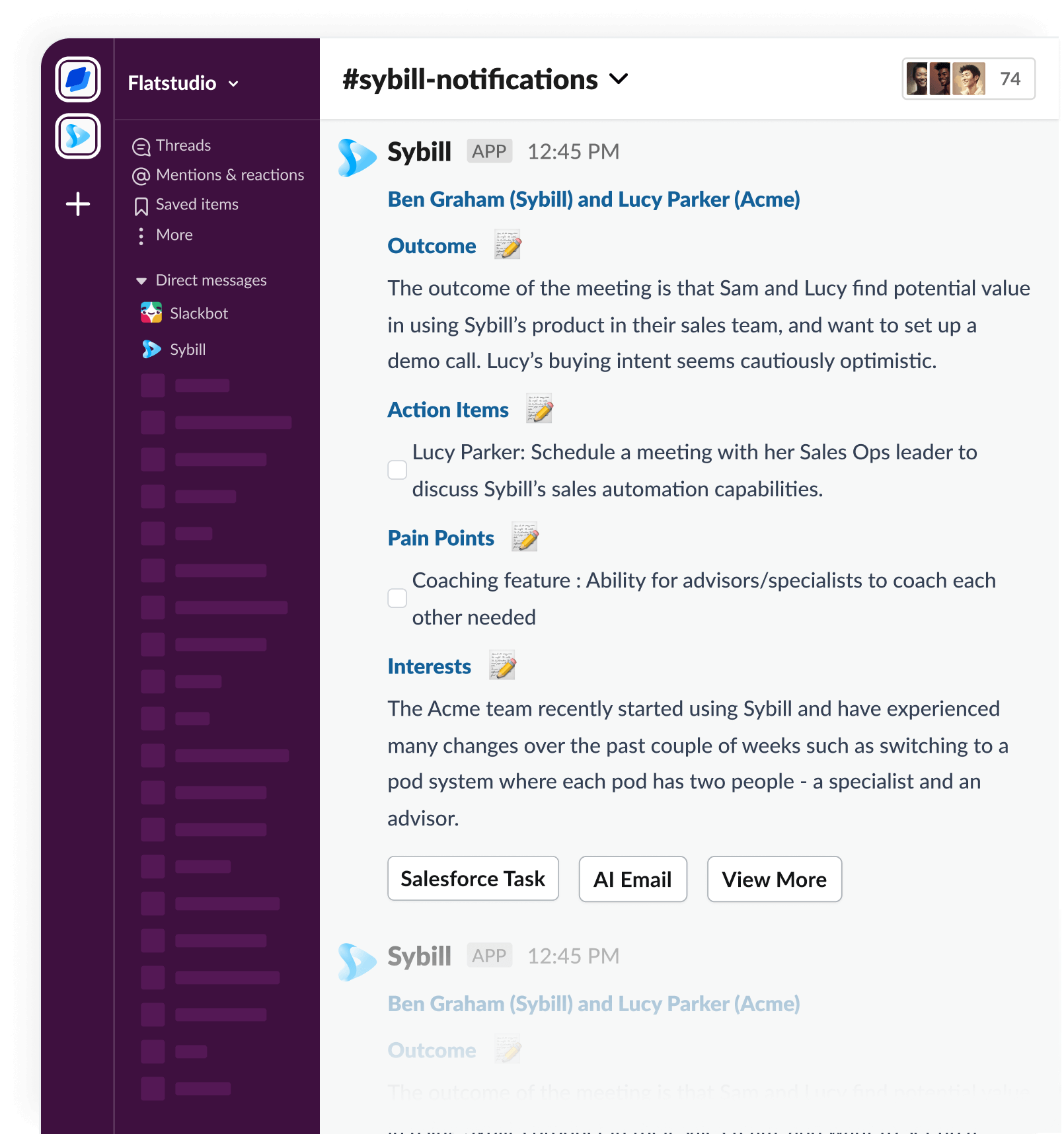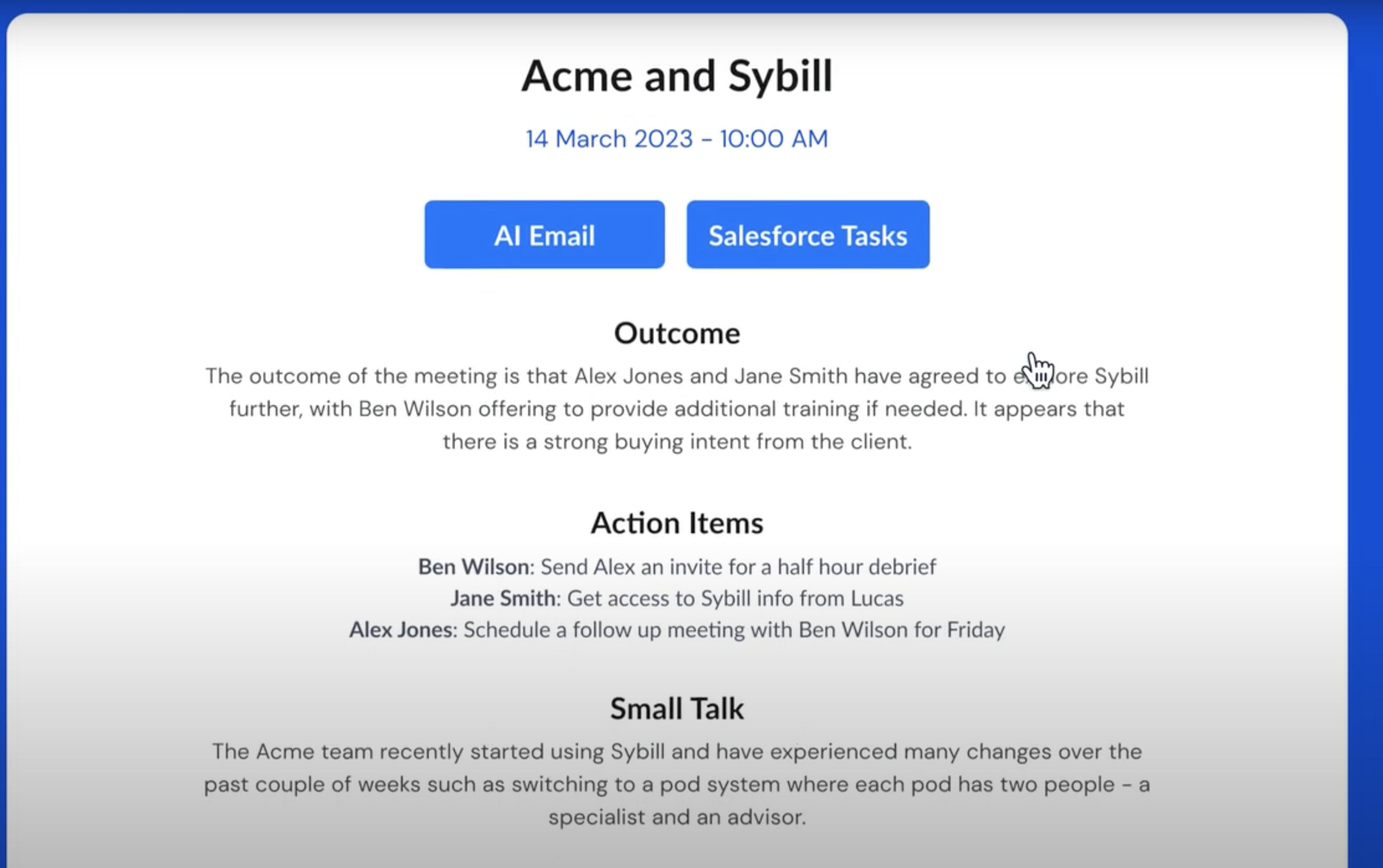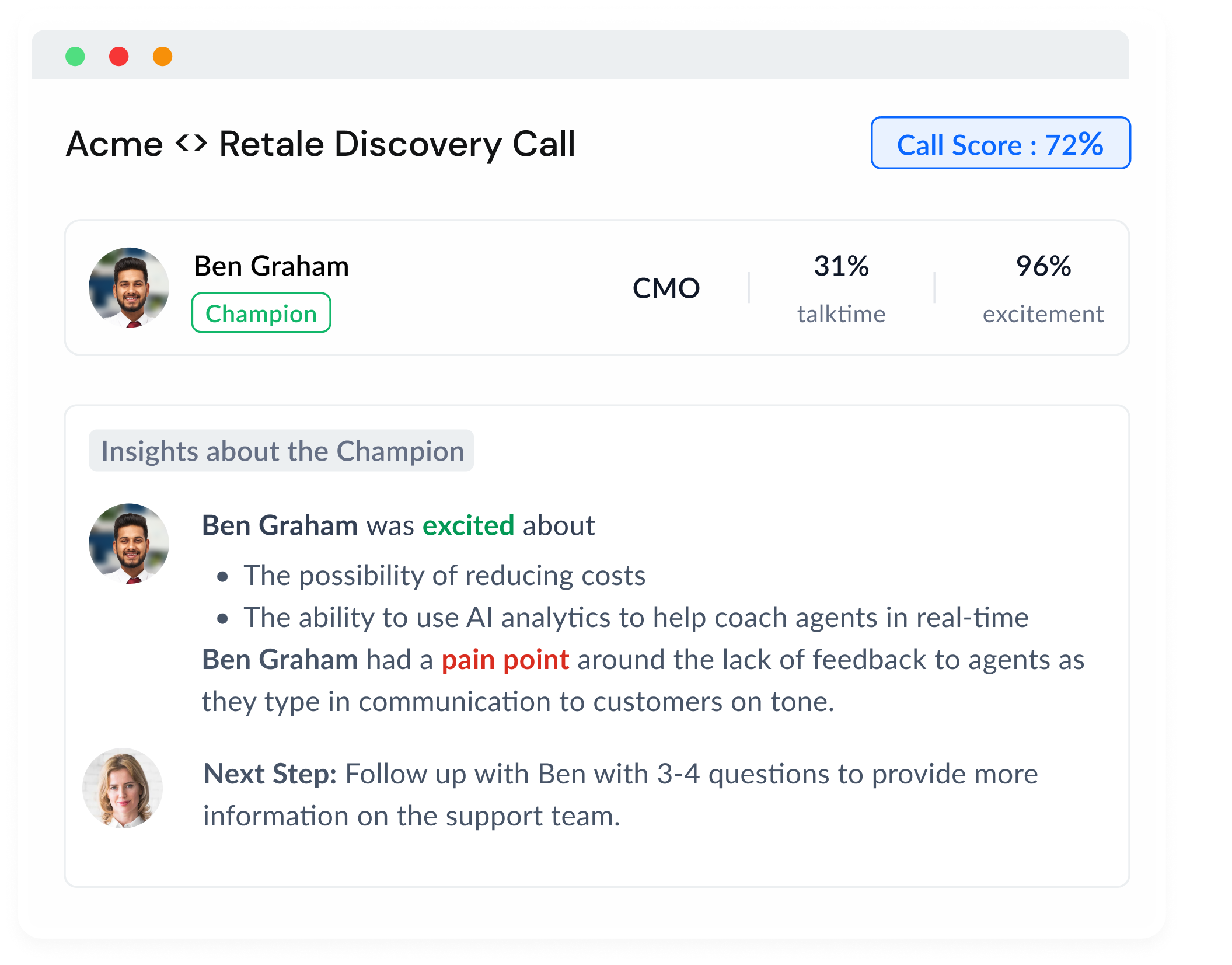Let's face it, after a long day of back-to-back sales calls, the last thing anyone wants to do is sit down and decode their scribbled notes. But here's the thing – those post-call minutes might just be where the real sales magic happens. It's not about filling in a template; it's about capturing the heartbeat of each conversation.
Enter sales call summarization.
In recent years, AI-driven tools have revolutionized this process, transforming the way sales teams manage their calls and follow-ups. With the help of AI, you no longer have to rely on your memory or illegible notes to recall key points from a call. Instead, these intelligent tools take care of the heavy lifting, allowing you to focus on what truly matters: closing more deals.
Key Elements of a Comprehensive Sales Call Summary
A good sales call summary is more than just a record of the conversation; it provides useful information and a clear plan for the future. To maximize its effectiveness, ensure your summaries include these critical elements:
Call Outcome
Begin your summary with a clear, concise statement of the call's outcome. Did the conversation end on a high note, or were there signs of hesitation? Understanding whether the prospect is leaning towards a commitment or needs further persuasion sets the tone for your follow-up strategy. This section isn’t just a recap; it’s a compass pointing you in the right direction.
For those not on the call, like sales managers or marketing teams, it offers a snapshot of where the deal stands and what steps might be needed next.
Action Items
A sales call often concludes with agreed-upon next steps. Whether it's scheduling another meeting, sending additional information, or arranging a product demo, these commitments are the lifelines of your sales process. Documenting these in your summary not only ensures you don’t miss out on crucial follow-ups but also helps keep your prospect engaged and moving through the sales funnel.
Conversation Starters
Building rapport with your prospects is an essential aspect of the sales process. Including the small talk and conversation starters from your call in the summary will help you remember personal details about your prospect, such as their favorite sports team or a recent vacation. These tidbits can be invaluable in establishing a deeper connection and fostering trust in future conversations.
Prospects' Pain Points and Areas of Interest
Your call summary should also highlight your prospect's pain points and areas of interest. These insights can help you tailor your pitch and demonstrate how your product or service can address their specific challenges. By including this information in your summary, you'll have a solid foundation for crafting personalized and persuasive follow-up communications.
These elements form the core of an impactful sales call summary. While additional details may be included based on the stage of the deal, your sales methodology, and other contextual factors, these components ensure your summary is comprehensive yet focused on the conversation’s key aspects.
Designing Sales Call Summaries for Different End Users
A one-size-fits-all approach to call summaries can be counterproductive. Different members of your organization will have unique needs when it comes to reviewing sales calls. Here's how to design summaries that cater to various end users:
- Sales Reps: For sales reps, summaries should focus on action items, next steps, and any objections raised by the prospect. This information will be crucial for guiding their follow-up actions during the early stages and ensuring they stay on track with their sales goals. Additionally, including conversation starters and small talk will help reps build rapport in future interactions.
- Sales Leaders: Summaries for sales leaders should emphasize the call outcome and overall sales performance. This allows them to quickly assess the health of the sales pipeline, identify areas for sales coaching or improvement, and allocate resources effectively.
- Product Team: For the product team, summaries should highlight any product-related pain points or feature requests from the prospect. This information can be valuable in informing product development and prioritization.
By tailoring your call summaries to the specific needs of each end user, you can ensure that your team gets the most out of these valuable resources. Some AI-powered tools might already generate summaries that are useful for different teams (like Sybill), and some others might give you the flexibility to design custom summary templates for different stakeholders.
Customization Options for Sales Call Summaries
In the diverse world of sales, one size doesn't fit all. That's why tailoring your sales call summaries to align with your team's specific needs is crucial. Here’s how you can customize your summaries to make them a perfect fit for your sales strategy:
- Custom Fields: A comprehensive sales call summarization tool should allow your team members to add custom fields to their call summaries. This could include industry-specific terminology, unique product features, or any other information that is relevant to your organization.
- Summary Templates: Develop templates for various stages of the sales cycle or for different roles within your team. This approach not only saves time but also ensures consistency in how information is captured and reported. Whether it’s a first-contact call or a closing call, each template can guide your team to record the most relevant information.
- Integration with CRM or Sales Enablement Tools: Connect your call summaries with your CRM and sales enablement tools for streamlined efficiency. Imagine having all the insights from a call summary pushed automatically to your CRM and shared on platforms like Slack. This integration means everyone is on the same page, updated in real-time, and ready to act on the latest information.
By offering customization options for your sales call summaries, you can ensure they are as useful and relevant as possible for your team.
The Role of AI in Sales Call Summarization
Artificial intelligence (AI) has transformed the way we approach many aspects of the sales process, and sales call summarization is no exception. AI-driven tools like Sybill can analyze sales calls in real-time, generating accurate and detailed summaries that help sales reps and leaders make informed decisions.

AI-powered summarization offers several advantages over manual note-taking, such as:
- Speed: AI can generate call summaries in a fraction of the time it would take a human to do the same, allowing your team to act on the information more quickly.
- Consistency: AI tools can maintain a consistent level of detail and accuracy across all summaries, reducing the risk of human error or bias.
- Scalability: AI seamlessly adapts as your sales team expands, effectively recording and summarizing each conversation despite the increasing number of calls.
By harnessing the power of AI for sales call summarization, your team can focus on what they do best—closing deals.
Conclusion
A well-crafted sales call summary can be a powerful tool for your sales organization. By understanding the key elements of an effective summary and tailoring it to the needs of different end users and sales cycle stages, you can ensure that your team gets the most out of this valuable resource. Additionally, leveraging customization options and AI-driven tools like Sybill can help streamline the summarization process and make it even more valuable for your team.
Now it's time to take these insights and implement them in your own sales organization—happy selling!















.png)





